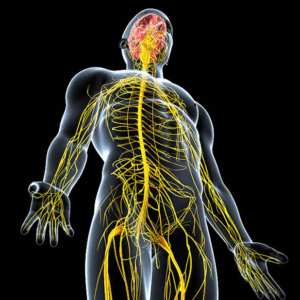Description
What are Narcotic Analgesics and How Do They Work
Narcotic analgesics are defined by the National Institute on Medicine Abuse (NIDA) as any drug that relieves pain by inhibiting nerve signals from the brain to the body. This includes medications like morphine and codeine. There are numerous types of narcotic analgesics, each with its own set of advantages and disadvantages that make it better or worse for some applications than others. Opiates and non-opiate synthetic narcotics are the two most popular forms of narcotic analgesics. To relieve pain, opioids bind to opioid receptors in the brain, spinal cord, and other organs. Non-opiate synthetic narcotics also bind to these same receptors but do not produce any type of high or euphoria like opiates do. They only work on pain without having any kind of side effects such as constipation or addiction.
Pharmapk care about the quality of our product. That’s why we make it a point to maintain high standards in every batch, so that you can rest assured knowing your medication will be top-notch when it matters most – and at an excellent price!. In addition, we have narcotic analgesics available for shipping anywhere on earth. So give us just one call if this sounds good; Pharmapk has what you need (or not) sorted already out.”
The Varied Uses Of Narcotic Analgesics
Narcotic analgesics are a diverse class of drugs that work by binding to opioid receptors in the brain. They can be used for long-term relief from chronic pain or as an immediate response to severe pain such as postoperative and trauma pain. This blog post will explore different uses for these medications and how they can help with medical conditions like cancer and fibromyalgia. The most common use of narcotic analgesics is in acute care settings like hospitals and emergency rooms, where they may be given intravenously (IV) or orally (PO). These medications provide quick relief from intense, often short-lived, episodes of pain caused by injury or illness.
The side effects Of Narcotic Analgesics and drug interaction
Since the late 1800s, narcotics have been used to treat pain. They are, however, not without drawbacks. Narcotic analgesics are highly addictive and frequently lead to dependence; these medicines should be used only as a last option after all other pain control strategies have failed. Narcotic painkillers such as morphine, oxycodone, hydrocodone are prescribed primarily for cancer patients with chronic or severe pain who cannot take NSAIDs, antidepressants, antiepileptics, or sedative-hypnotics. All possible side effects of narcotic painkillers are constipation, nausea, vomiting, sleepiness, disorientation, confusion, itching, skin rash, or hives. More severe side effects may include breathing problems, slurred speech, decreased urination, falls, coma and even death.
It is essential to know what other drugs will affect morphine. Some medications can negatively affect how morphine works in your system, while others may have an opposite effect and increase the drug’s effects. The most common interaction that people are aware of when it comes to this substance is caffeine. Caffeine will actually block the effects of opioids like morphine, so be sure you avoid coffee or any other caffeinated drinks when taking these types of medications. Some other drugs that can interact with narcotic analgesics include benzodiazepine sedatives like diazepam and Alprazolam, sleep medicine, muscle relaxants, and antidepressants.
Severe consequences of Narcotic Analgesics overdose
Narcotic analgesics are very effective in treating chronic pain. However, due to the high risk of overdose and addiction, these drugs should only be used in a manner prescribed by a physician. In addition, the adverse effects of narcotic analgesics can be seen when they are taken for recreational purposes or when there is an accident that requires treatment with one of these drugs.
Ingesting too much of this medication will result in breathing difficulties, which could be fatal if not immediately treated by medical personnel. Signs and symptoms include slurred speech, confusion, shallow breathing or slow heart rate, along with pinpoint pupils where light does not affect the pupils. Other symptoms include nausea, vomiting and diarrhoea, along with a feeling of being very tired or fatigued.
How to deal with Narcotics analgesic overdose.
Narcotics antagonists, in general, act on different pathways to elicit their effects. For example, naltrexone is a narcotic antagonist that binds to opioid receptors and prevents the drugs from reaching them and producing their effects; narcotic antagonists such as naloxone block these receptors and prevent narcotics from accessing them and executing their functions. Naloxone, naltrexone, and nalorphine are examples of narcotic antagonists. They’re used to counteract the damaging effects of an overdose of narcotics, frequently saving the patient’s life. Naloxone may be injected or administered as a nasal spray.
Way to reduce risks of Narcotics analgesic overdose.
One way to reduce the risks associated with narcotics analgesics is by establishing a lockbox system where opioid medications are locked away from patient access until they need them. Another way would be to implement a medication safety program that includes education on pain management and safe use of opioids while considering other treatment options such as physical therapy or acupuncture- these programs often result in decreased rates of misuse and abuse of opioids among patients who’ve completed it, which has been shown to reduce the risk of overdose.
Narcotic Analgesics: Dosing Detail Codeine Tablets
- 15mg tablets contain 15mg codeine per tablet.
- 30mg tablets contain 30mg codeine per tablet.
- 60mg tablets contain 60mg codeine per tablet.






Reviews
There are no reviews yet.